Our great grandparents were healthier than us, and here's what they ate
Aug 25, 2022
The health in America is declining, rapidly. So, in this article we will review potential reasons why, and analyze what our great grandparents ate (and what they didn’t eat), during a time when chronic diseases were not nearly as prevalent.
---------------------------------------------------------------------------------
Now, more than ever, there seems to be so much confusion as to what we should eat – what food is ‘good’, what food is ‘bad’.
With such a large reliance on processed food and massive marketing dollars spent by large food companies, we’ve lost touch with food culture.
In fact, we don’t have food culture.
People are truly confused as to how we should eat, and how to form meals.
And with chronic diseases, obesity, and autoimmunity on the rise, one thing is clear: what we are doing now isn’t working.
The chronic disease prevalence in the 1930s was 7.5% (ref). Today, 60% of the population has one or more chronic disease (ref, ref).
This is a 700% increase.
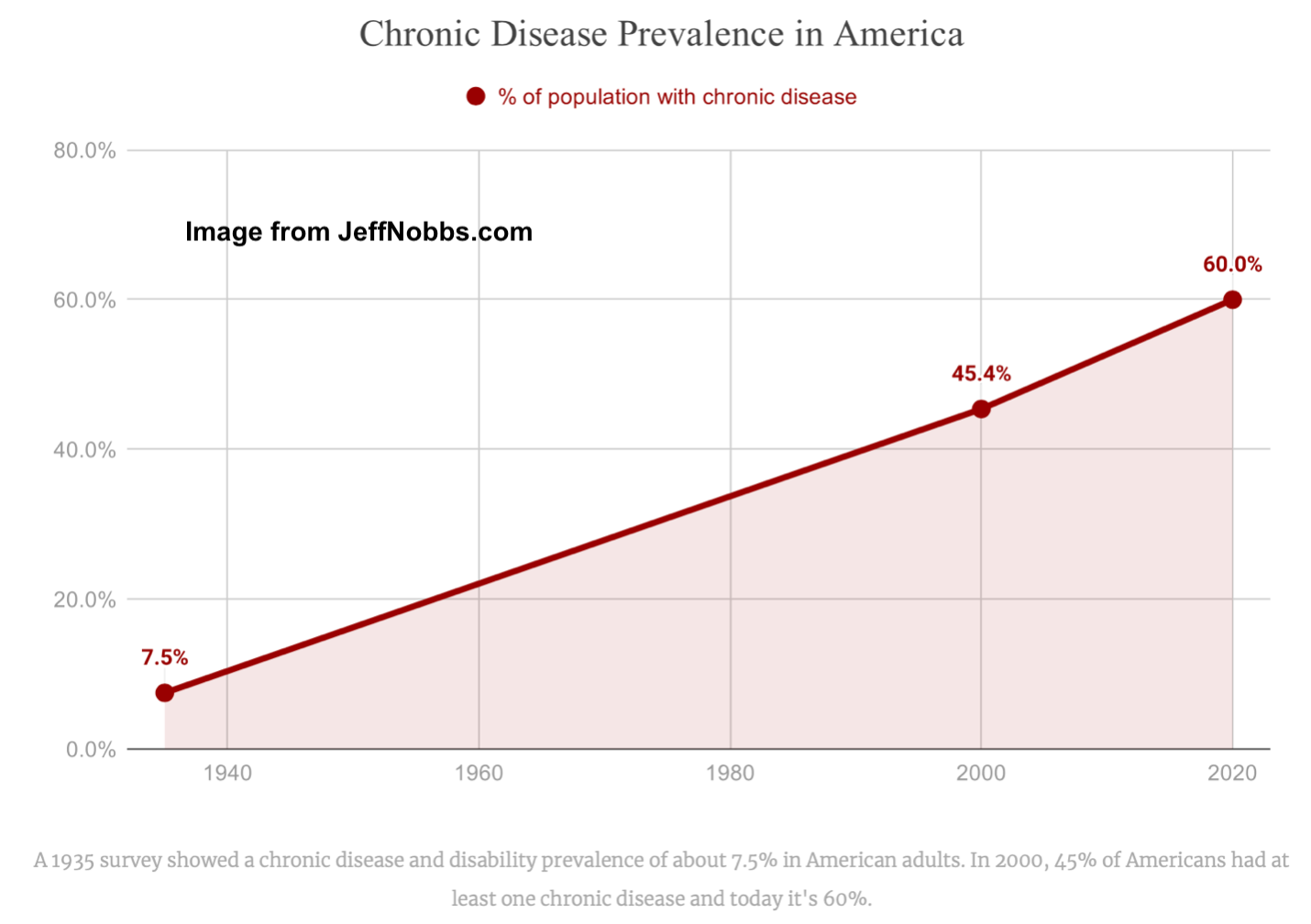
A new 2022 study found that less than 10% of Americans have good metabolic health (ref).
And data from the CDC in 2018 reported that 42.4% of Americans are considered obese (ref). Imagine what this number is in 2022!
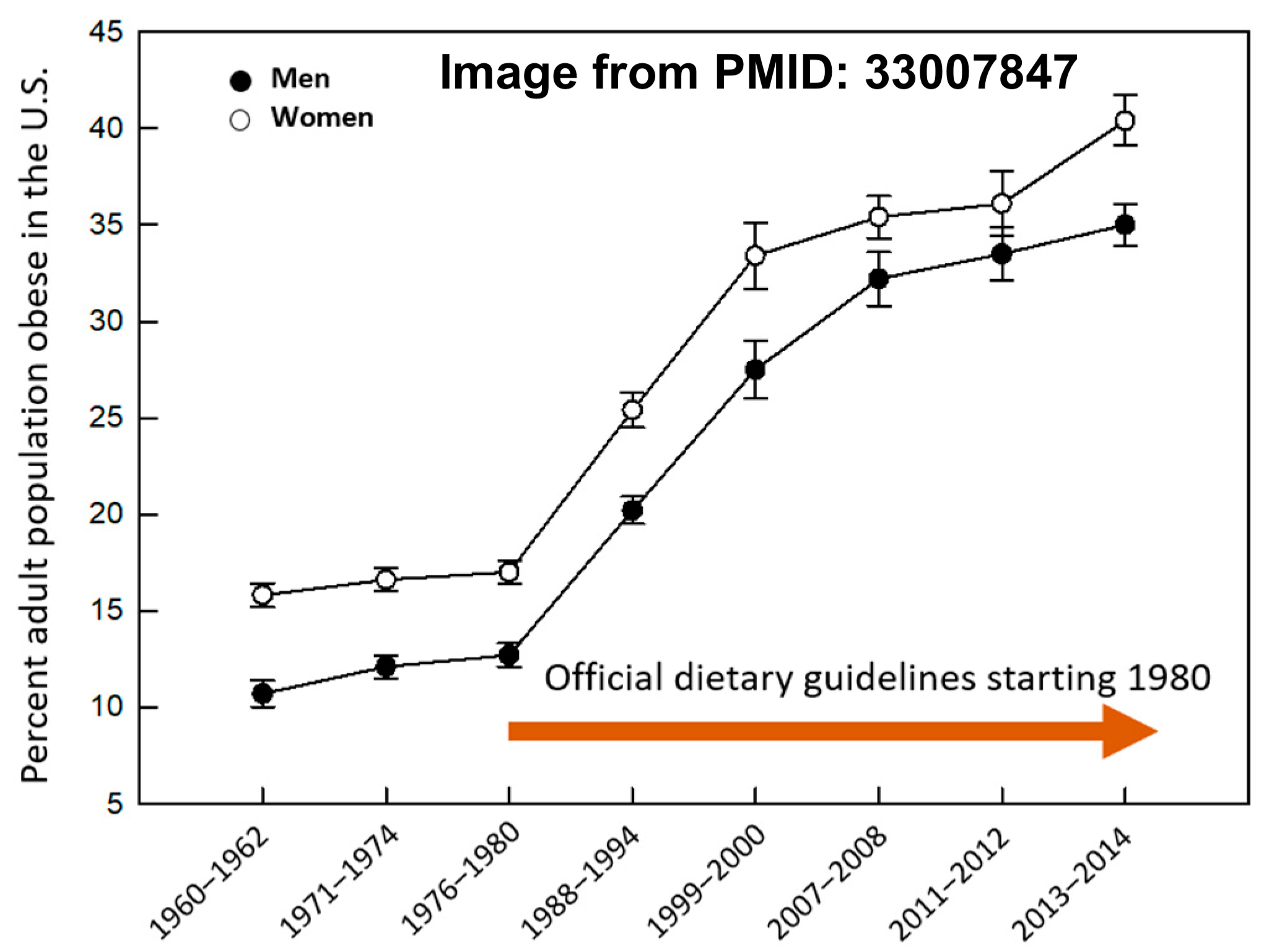
And while science and technology are improving, America is the only developed nation with a *declining* healthy life expectancy and total life expectancy! (ref) And this data is before C0V1D.
Total life expectancy (TLE) is how long people within a population are expected to live. Healthy life expectancy (HLE) measures how long people within a population are expected to live without disease or disability. For example – someone lives disease free for 65 years, then develops heart disease at 65 and passes 10 years later. HLE = 65 and total life expectancy (TLE) = 75.
TLE measure how long we can keep sick people alive and incentivizes disease management. HLE directly relates to the number of healthy and happy years and incentivizes disease prevention.
You can analyze the following data from the World Health Organization by comparing the TLE or HLE from previous years. This data is for the United States of America.
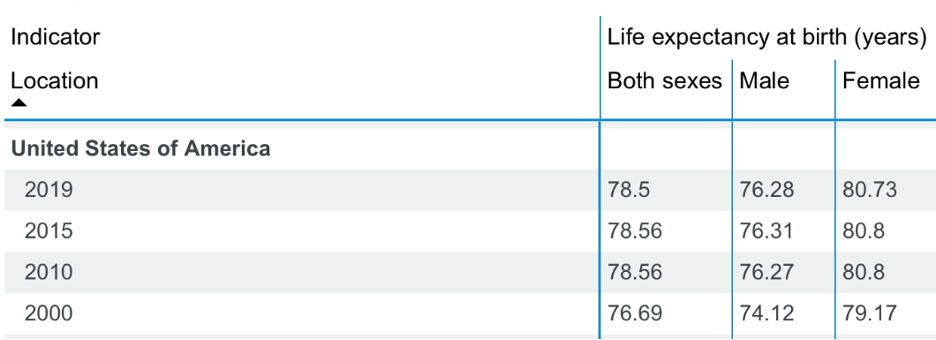

The TLE in 2015 was 78.56 and in 2019 it decreased to 78.5.
The HLE in 2010 was 66.7, which declined to 66.6 in 2015, and declined again to 66.1 in 2019.
With a declining TLE and HLE and obesity on the rise, it’s time to admit we are doing something wrong.

But we didn’t always have such widespread chronic health problems…
How did we get to the point where 60% of the population has one or more chronic disease and only 12% of the population is metabolically healthy? (ref)
Well, we are certainly less active, that's for sure.
But what and how we eat plays a big role in our health.
So, let’s go back in time a bit to see what people were eating in a time when chronic diseases were not as widespread to gain some insight to the type of food that can support health.
How can we do this?
By analyzing vintage cookbooks.
Over the last few months, I have been moderately obsessed with reading old fashioned cookbooks from the 1700-1900 era. These cookbooks provide a great picture as to how families ate at the time. And how much food culture they had, that was passed down from generation to generation.
The nutritional wisdom continues to fascinate me as I learn more about cultural food preparation.
So, let’s dive into 10 trends I have gathered comparing these cookbooks to how most people eat today. (and what 'mainstream' claims as 'healthy')
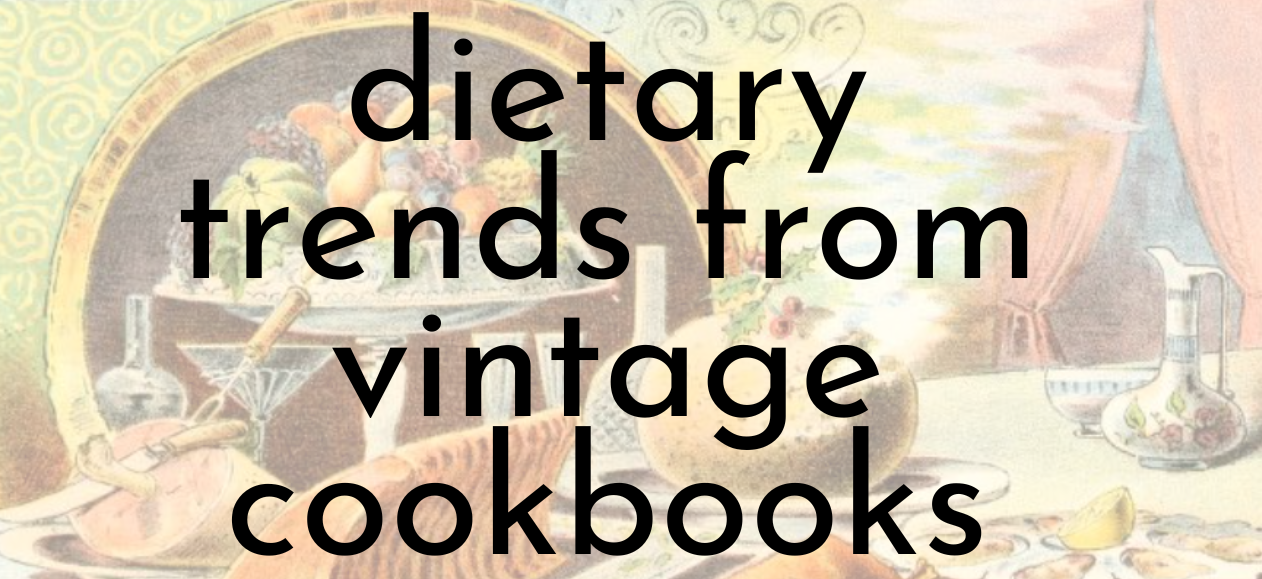
Trend #1: they ate the whole animal
Meaning, nose to tail eating was just a normal part of every day life.
They didn't just eat skeletal muscle cuts like chicken breast, ribeyes and tenderloins.
No, nothing went to waste so they ate pretty much every cut on the animal.
The result was not only just lest waste, but also a wider nutrient intake, and more balanced amino acids.
The organs are often the most nutrient-dense (superfoods), and bone in cuts of meat often contain a lot more collagen relative to pure muscle meat.
Example recipes from “The Southern cook book of fine old recipes”, 1935.
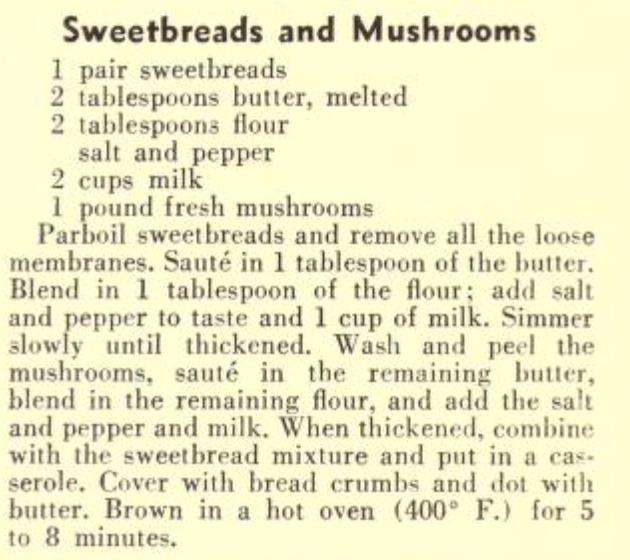
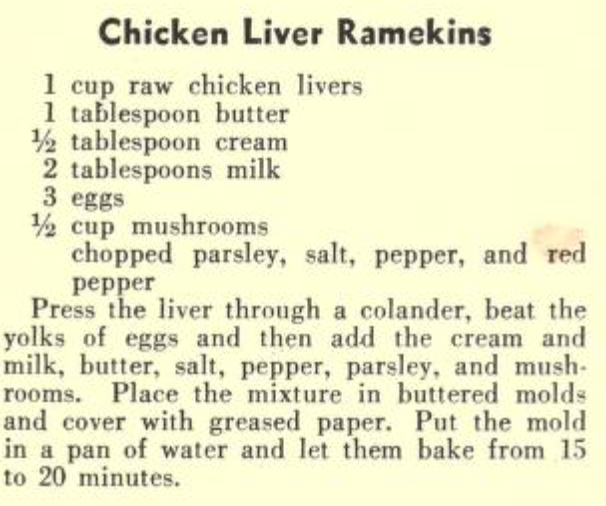
Most days of the week, a bone in cut was being braised, providing an abundance of bone broth and gelatin, on top of the amino acids in muscle meat.
Trend #2: they ate a lot of meat, and consumed it daily
Check out a few pages from the Table of Contents from "The Lady's assistant for regulating and supplying the table" from 1787.

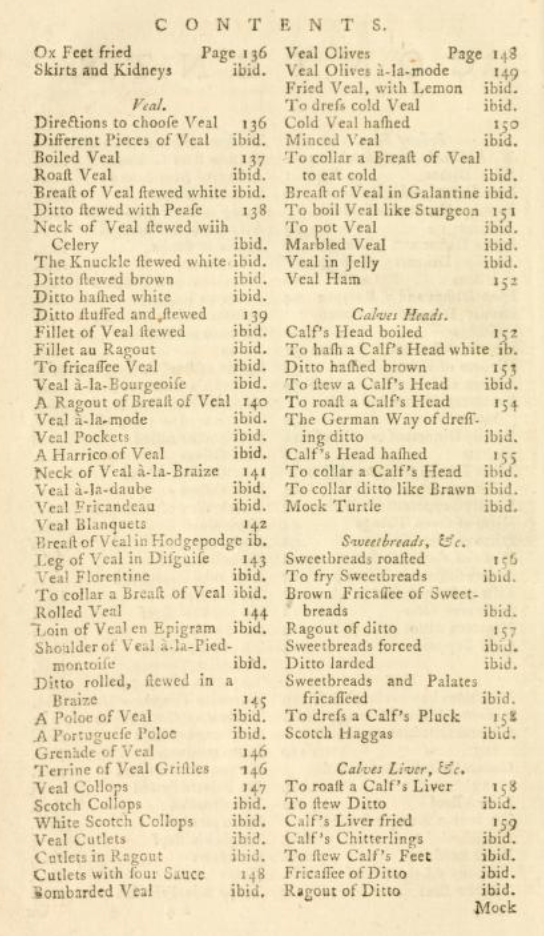
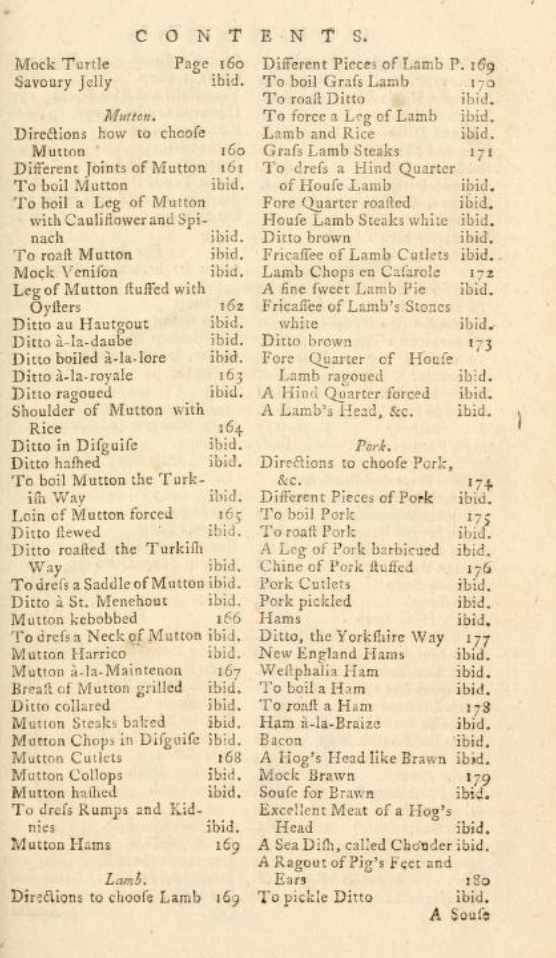
So much meat, and so many diverse, nose to tail cuts!
The consumption of meat was considered a mark of a good diet, and its complete absence was rare (consuming low amounts was in the case of an extreme poverty diet). (ref)
They did not fear saturated fat, and recent re-evaluations of the data used by Kellogg to demonize saturated fat in the 1900s are showing a different picture. Some researchers have instead demonstrated that "[s]aturated fats from animal sources [are] inversely correlated with the prevalence of NCDs [non communicable diseases]." (ref)
Images below are from the paper, 'Re-evaluation of the traditional diet-heart hypothesis: analysis of recovered data from Minnesota Coronary Experiment (1967-73)', published 2016 (ref).
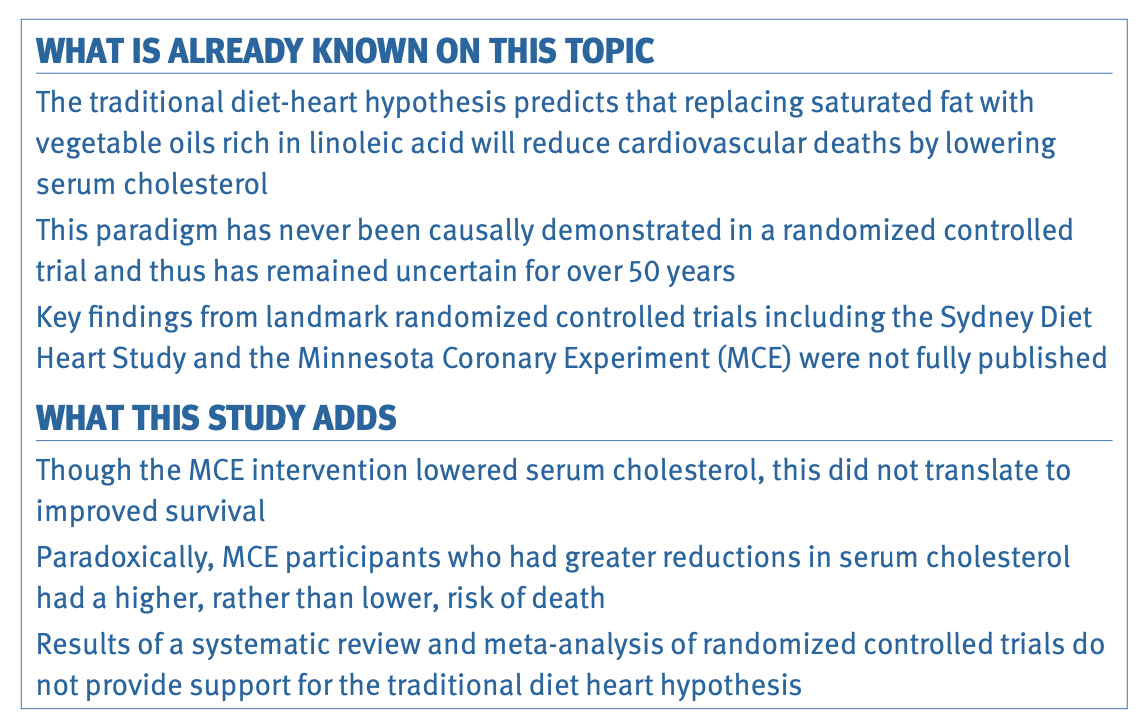
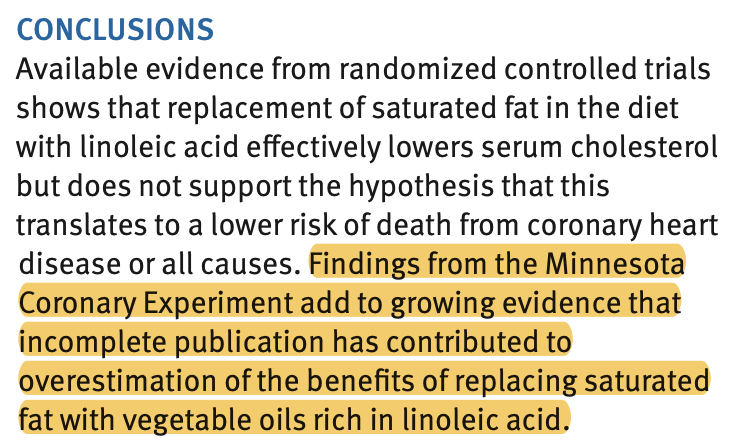
We are eating a lot more vegetable oils, and less animal fats relative to the early 1900s, and yet our health is declining. Was it really the meat that caused health issues? No.
Isn't the answer as to 'the best type of fats' obvious?
Images from ref.
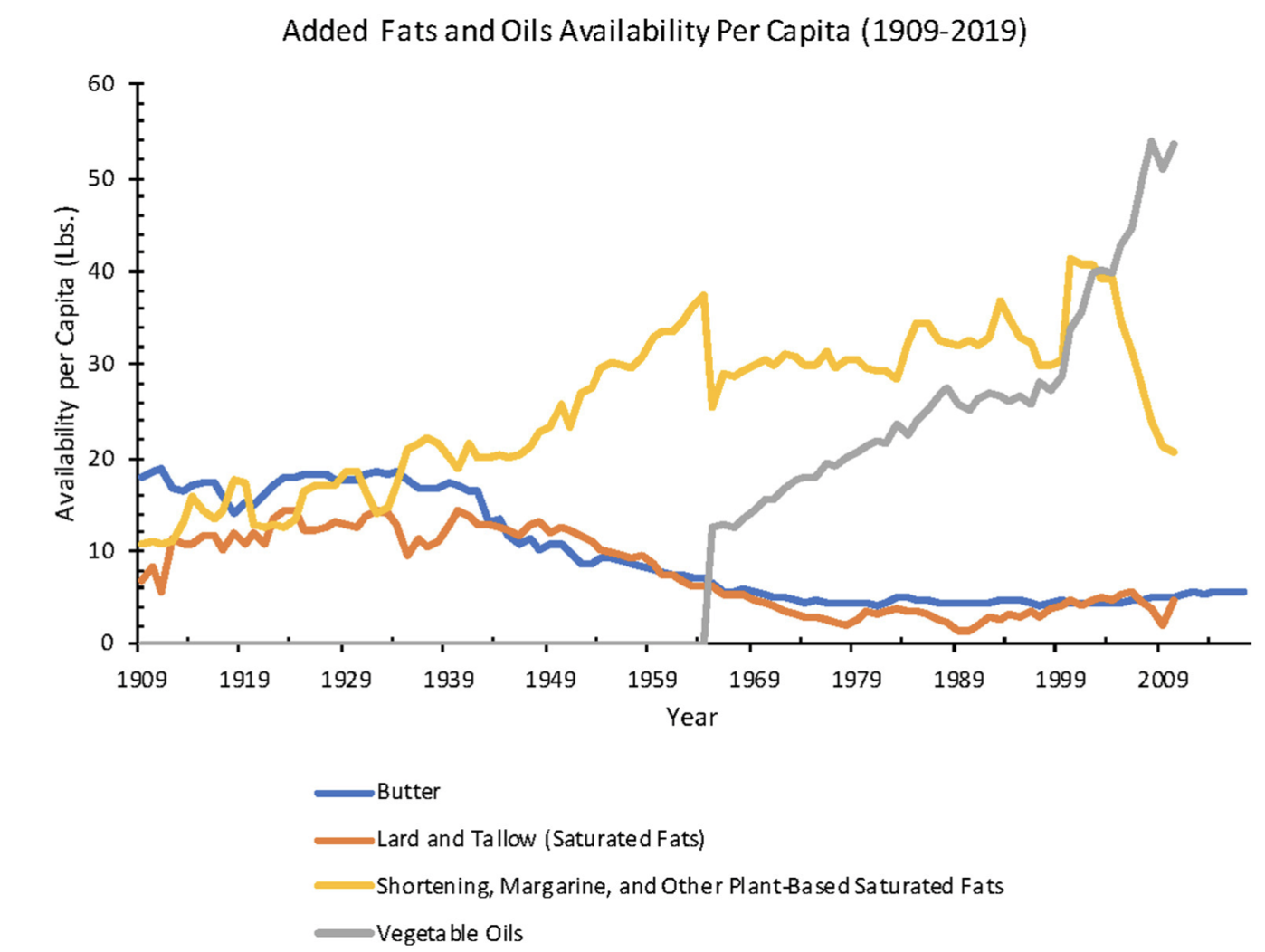
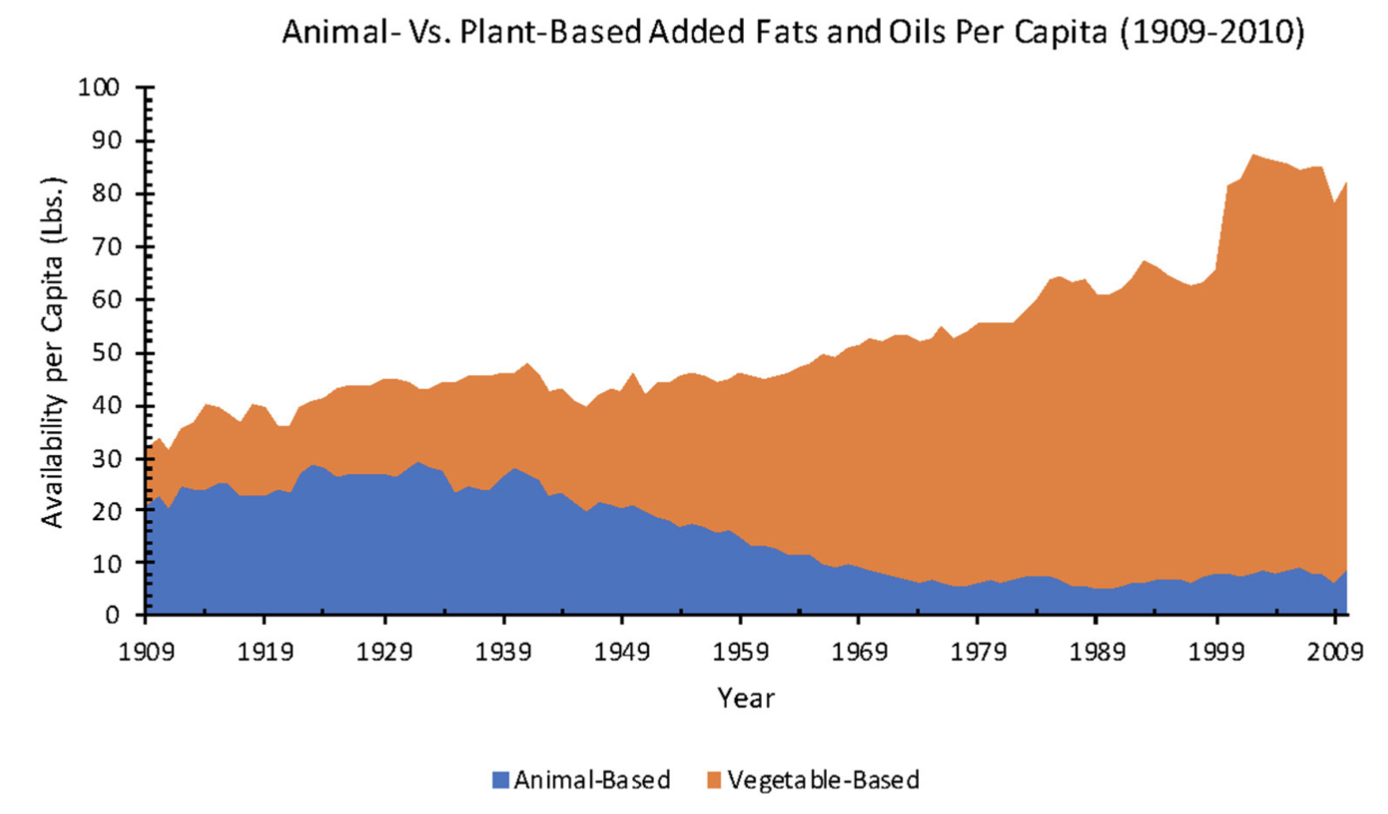
Trend #3: they ate a wide variety of animal products
Meaning, they didn't just eat chicken (which Americans seem to prioritize these days). Each animal provides a unique set of nutrients, and some are higher in certain nutrients than others. For example, beef and lamb are high in zinc. While pork is high in Vitamin B1.
Again, this diversified protein intake resulted in a diverse intake of beneficial nutrients.
Trend #4: they used low and slow cooking methods
Big roasts, stews, big cuts of meat, cooked low and slow with love were popular and common most days. Very different than the quick and convenient cooking methods commonly used today!
 (ref)
(ref)
Trend #5: fruit preservation techniques were extensively used, providing access to carbohydrates all year round
Carbohydrates were consumed all year round, and a lot of them! They definitely ate in season, but they went through extensive preparation (think jams & jellies) to ensure access to carbs 365.
Just a few examples of grape preservation from “The lady's assistant for regulating and supplying the table”, 1787.
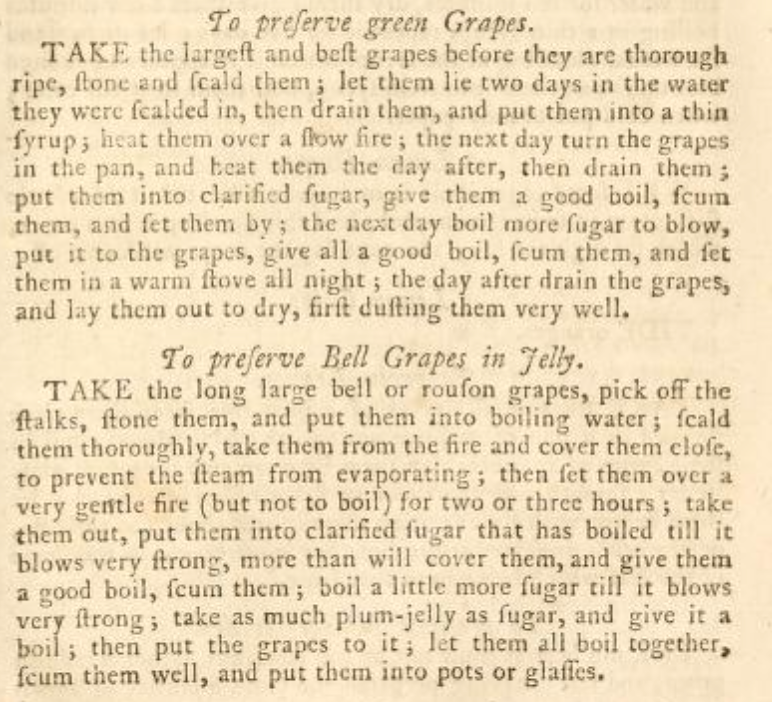
Here are examples of a 'Bill of Fare' (meal plan) with some receipts (recipes) for the month of January (winter) and August (summer).
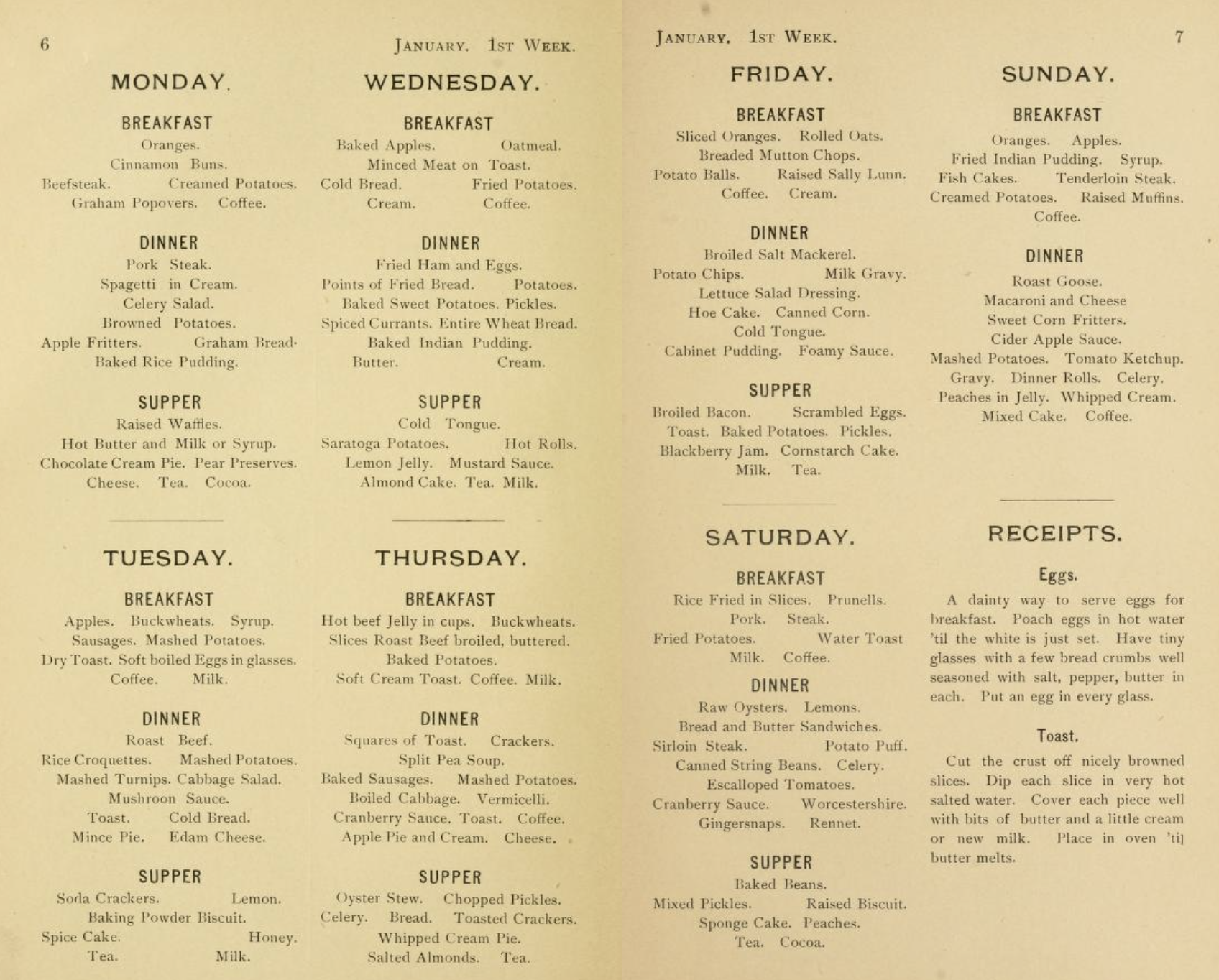
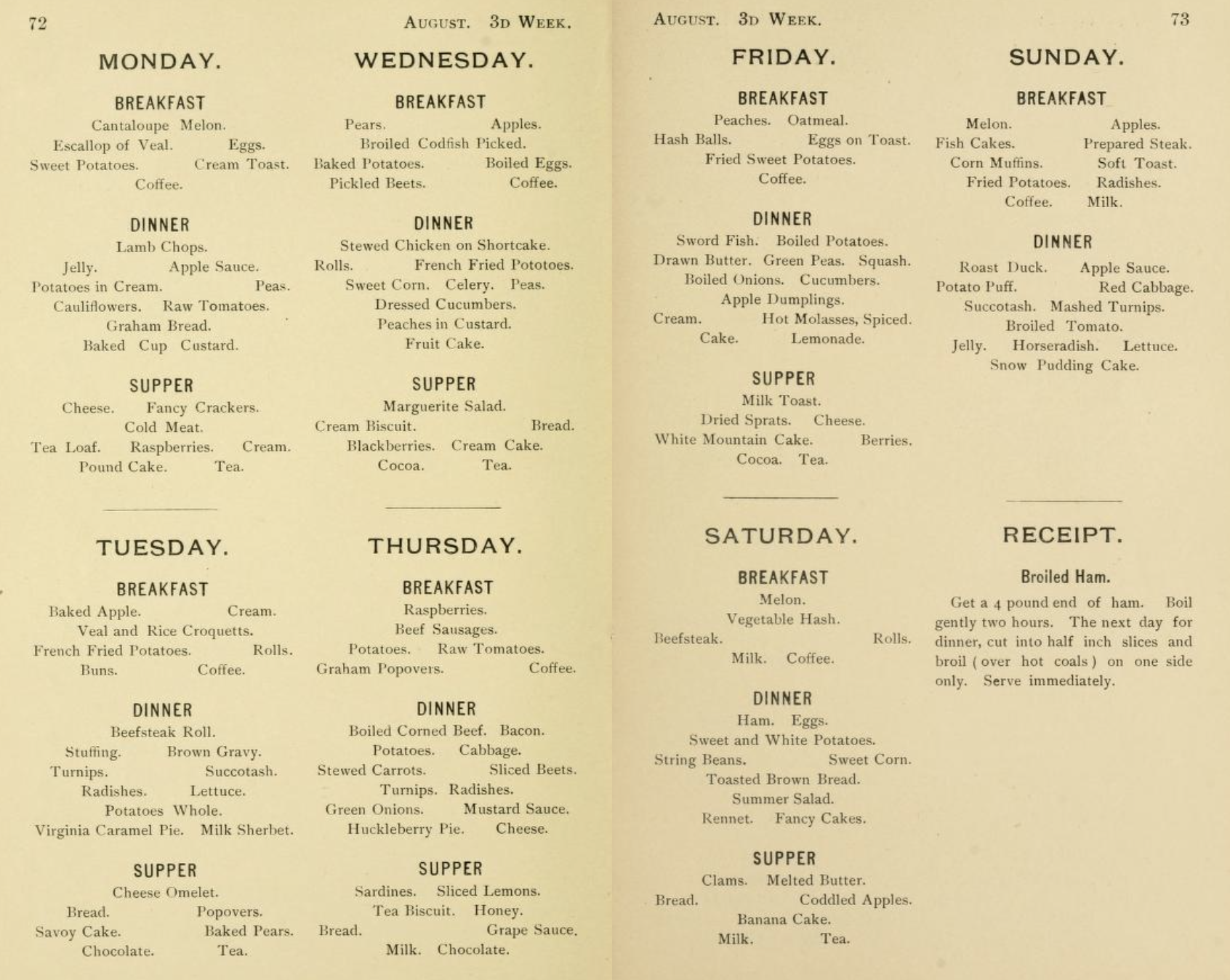
From 'What shall we have to eat?', 1893.
Carbs consumed were largely fruits in season (citrus, for ex in Jan. melons, for ex in summer), jams & jellies, honey, sugar (in desserts), potatoes, flour in baked goods, and bread.
Trend #6: they ate a wide variety of vegetables, but mainly cooked
I do not think raw kale smoothies were on the menu! We are not ruminant animals who have complex digestive systems to break down thick cellulose fibers in raw veggies. We need easy to digest food!
 From (ref)
From (ref)
Trend #7: daily sugar consumption in the form of homemade desserts
Yes, sugar is low in nutrients. But no, sugar is not inherently toxic. In the context of an otherwise nutrient-rich diet, sugar can be metabolically supportive.
Our great grandparents consumed moderate amounts of sugar in homemade desserts daily.
Their desserts were largely made from unfortified flour, sugar, butter, eggs, and milk. (No sugar alternatives, margarine, faux-eggs, or nut milks).


From 'The Common Sense Cookbook', 1894.
“Desserts were also regularly served, often fruit or dairy-based – apple pies, rice or tapioca puddings, stewed or fresh fruit like gooseberries or cherries, in season.” (ref)

Above image from ref.
Relative to the early 1900s, we currently consume similar amounts of cane and beet sugar. Again, sugar is often demonized, but is it the sugar ingredient, or the food the sugar is commonly packaged in? (like Twinkies, doughnuts, cakes, etc. that contain fortified flour, preservatives, dyes, and vegetable oils)
Consuming sugar in homemade baked goods (without vegetable oils) in the context of a well-rounded, nutrient-rich diet is not toxic.

Image from ref.
Trend #8: they did eat refined flour
This is actually something I have changed my mind about. Before reading cookbooks, I really didn't think flour was used often.
But refined flour was a part of their diet through daily treats, and was regularly used in sauce recipes.
HOWEVER, their flour was not fortified with iron (metal shavings, which was added to our flour and implemented in the 1940s), was not genetically modified, and was not coated in high amounts of pesticides (like Glyphosate).
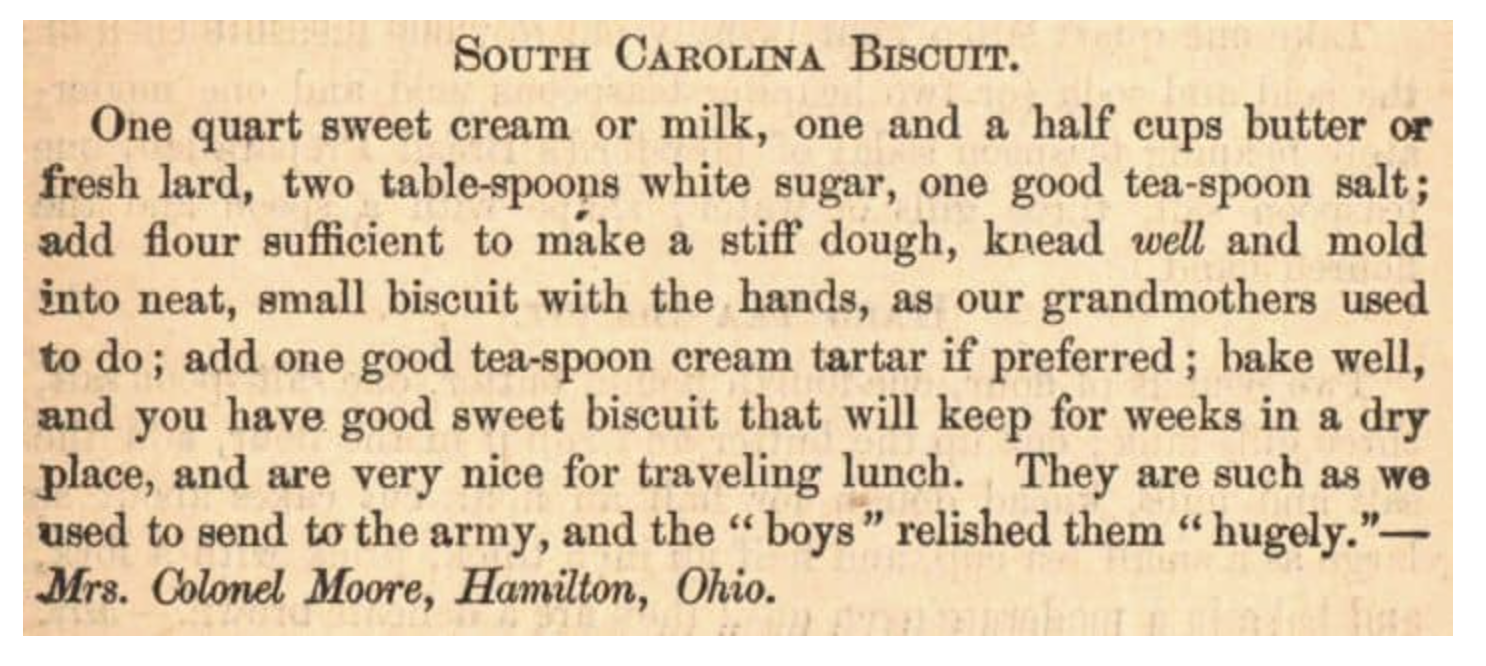
From 'Buckeye Cookery', 1890.
Trend #9: they did not eat processed food out of a bag
Home-cooking was the norm. In fact, processed food consumption has increased from <5% in the 1800s to now more than 60% today. (ref) Cooking and prepping food was a sacred activity, not an inconvenience.
Many cookbooks viewed it as a cherished art form, passed from one generation to the next.
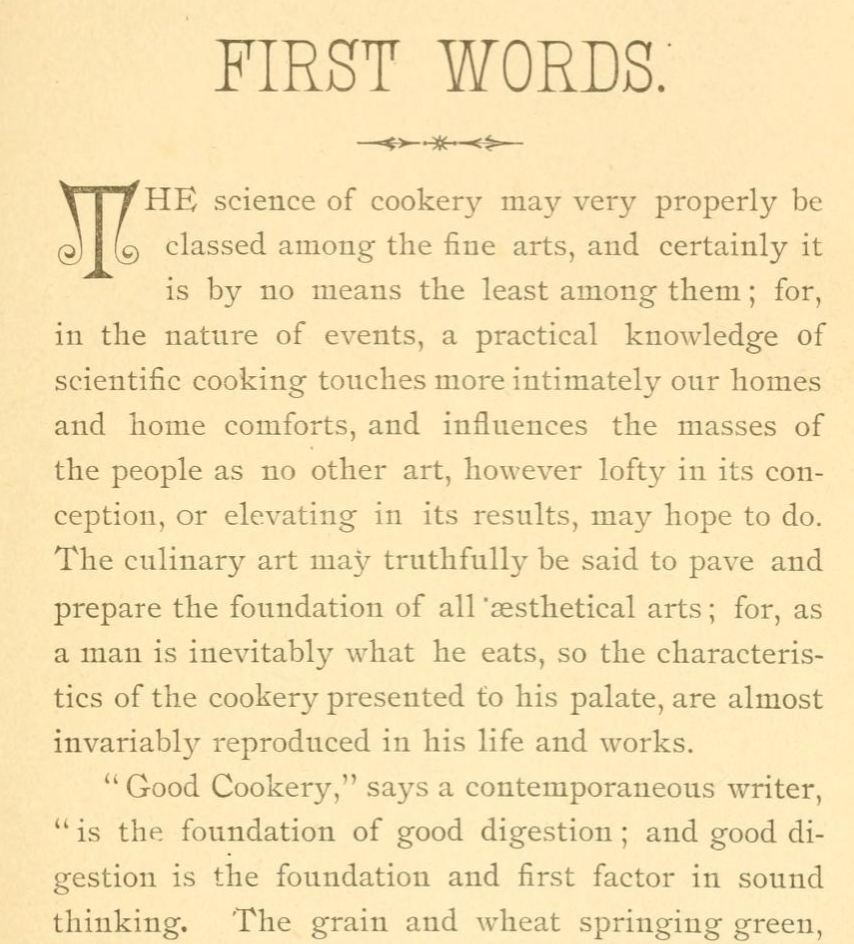
From 'Three Meals a Day', 1890.
Trend #10: they did not voluntarily fast, and had 3 meals a day plus snacks
Check out some screen shots from various vintage cookbooks.
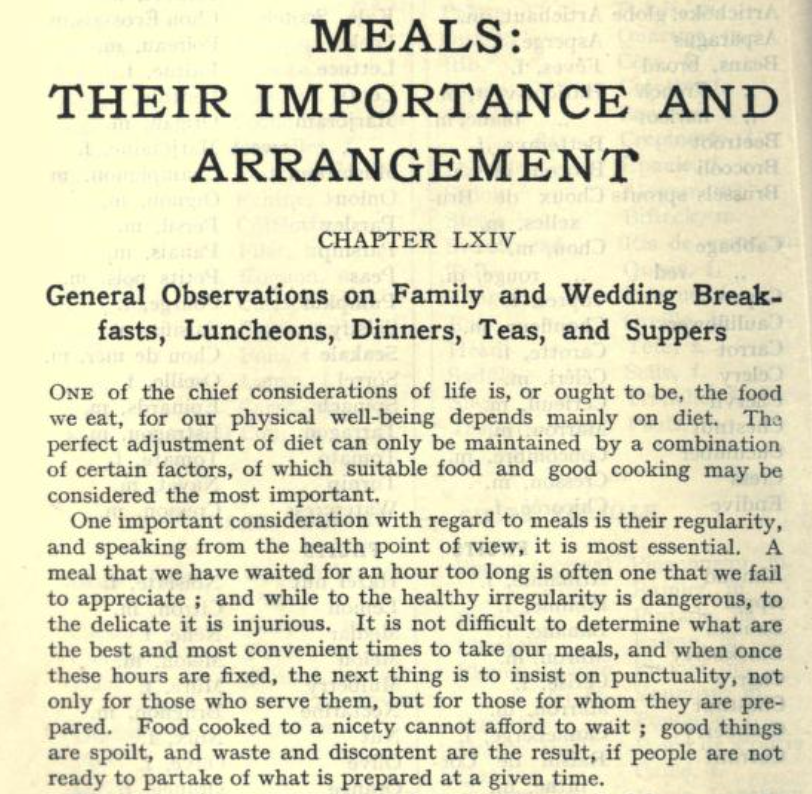
From 'Mrs. Beeton's Household Management', 1907.
Many cookbooks contained Meal Plans, which were termed "Bill of Fares".
Here are a few examples --

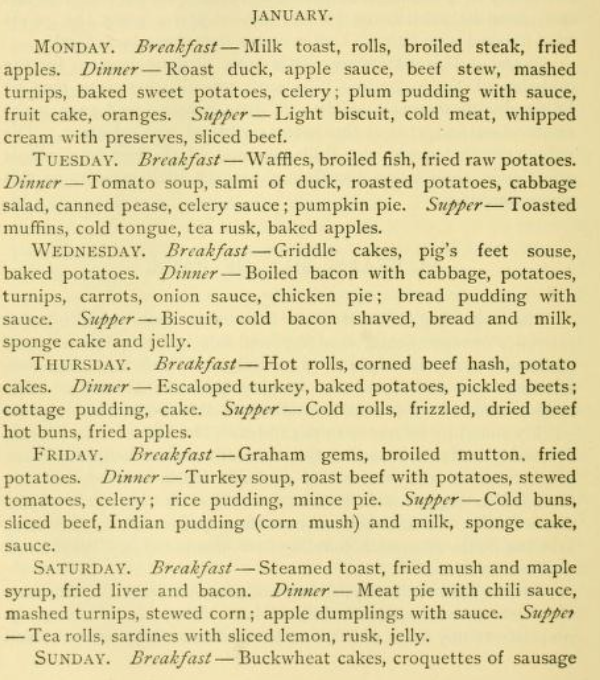
From 'The Queen of the Household', 1896.





From '“What shall we eat? A manual for housekeepers. Comprising a bill of fare for breakfast, dinner, and tea, for every day in the year,” 1868.
This cookbook has a meal plan for every week of the year!
Summary
of what was and what was not in the cookbooks.
What was not part of their diets:
- vegetable oils
- dairy free cheeses
- tofu
- oat milk and nut milks
- high fructose corn syrup
- a lot of raw vegetables
- GMOs and heavy pesticide exposure in food
- artificial sweeteners
- nuts & seeds in excess (instead, part of condiments or in sweets on occasion)
- flour fortified with iron (literal metal shavings, which was implemented in the 1940s)
- processed food
- heavy chicken consumption (which can be a high source of PUFA since chickens are now fed a bunch of soy and vegetable oils, which translate to higher PUFAs in their tissues since they are monogastric animals)
Image from ref. Why are we so obsessed with chicken these days?

What was part of their diets:
- a wide variety of meat
- nose to tail (using all part of the animal)
- fruit
- properly prepared starches and vegetables
- sugar
- un-fortified, non GMO, low pesticide laden flour
- daily desserts
- animal fat, full with fat soluble vitamins
Note: now we don't need to consume a ton of fat each day - everything in moderation. We discussed in this blog post how consuming too much fat can interfere with your ability to utilize carbohydrates (plus, eating high carb and high fat is a very high calorie diet). But the fats that we do consume should largely be animal fats since these are lower in PUFAs and high in fat soluble vitamins.
Check out this 'market list' from 'Warne's Model housekeeper', 1882, where the author mentions this list in addition to produce available at the market.

One could argue that our great grandparents, and great great grandparents, were healthier than us. And we can learn a lot from them.
A common counter argument to this statement is “But our great grandparents didn’t live that long!”
While medical advancements have certainly improved some aspects of healthcare, the assumption that human life span has increased *dramatically* is misleading.
Overall lifespan has increased since then, but there is some evidence that this is not because we are living far longer. Instead, it’s increased since more of us are *making* it that far.
A lot of life expectancy data from the past is skewed by high rates of infant mortality.
“Infant mortality rates were unquestionably high, and around 50% of all infant deaths at all levels of society was due to infectious diseases.” (ref)
If you have two children, and one dies before their first birthday but the other lives to the age of 70, their average life expectancy is 35.
“Once the dangerous childhood years were passed… life expectancy in the mid-Victorian period (1850-1870) was not markedly different from what it is today” – Judith Rowbotham and Paul Clayton. A five-year-old girl would live to 73, and a boy to 75.
Modern medicine and science is very good at keeping babies alive, which will thus increase our life expectancy.
Plus, they didn’t suffer from the chronic diseases and autoimmune conditions plaguing us today. Many enjoyed relatively good health in old age!
There is evidence that rates of chronic diseases were significantly lower, indicating the healthy life span was higher.
Here is an image from (ref) which compares the causes of death between two time periods.

Another image from (ref) showing trends in cancer.

The demonization of animal food that we've consumed for generation can be traced back to profits.
As a society, we've taken the most bioavailable & nutrient-dense animal protein sources and have labeled them as "unhealthy".
But it's no coincidence that large food corporations cannot make big profit margins with small scale farming, but they can easily profit by making fake, plant-based versions of these foods utilizing corn and soybean byproducts from mono-cropped fields and other highly processed ingredients.

In Conclusion
If we return back to the question of "what should we be eating" - after learning about food history, the answer is clear. Meat, butter, milk, sweets & sugar, fruit, properly prepared starches and vegetables.
It's about eating appropriate amounts of foods, as anything in excess can cause problems.
But fearing food is not the answer.
Food should be nourishing, and food should be enjoyed.
Our great grandparents did not obsess over what they should/should not be eating.
They knew this intuitively since it was passed down from generation to generation, and this innate nutritional wisdom is portrayed and preserved in these vintage cookbooks.
Food was viewed as nourishment and love, not as an inconvenience and something that was prepared quickly from a package.


Images from 'Warne's Model Housekeeper', 1882.
I think I was meant to live in this era!


From 'The Lady's Assistant for regulating and supplying the table', 1787.
Our nutritional strategy and how we view food is honestly pretty similar to how our great grandparents ate:
- animal products for fat soluble vitamins and bioavailable protein
- properly prepared starches and grains
- fruits, honey, and sucrose sources
- moderate fat, higher carb, and moderate protein
- enjoying homemade sweets alongside a nutrient-rich diet, which eliminates cravings or binge sessions
We view food as nourishment, life and love. We consume the most nutrient-rich food on the planet (animal products), while also factoring in Vitamin P (pleasure) because a healthy diet does not have to be restrictive. If it is, it's not sustainable. If you are binging, then your current approach is not working and your body is asking for nutrients and energy. Sugar sources can be a part of a well-rounded diet without consequences.
If you need some nutritional support and guidance, and are interested in learning more about some of these nutrition principles that our ancestors inherently knew about (proper food preparation, assembling balanced meals, eating an amount appropriate for your body, etc.) - check out our course, Rooted in Resilience.
We help you leave behind all the restrictive diets, fear, and confusion around food. We empower you to become your best resource and start living your best life with the energy and confidence to follow your dreams.


